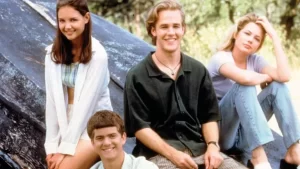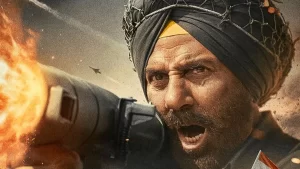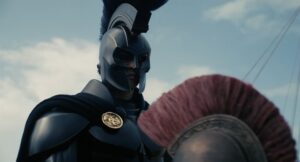
Ant-Man and the Wasp: Quantumania is now the second worst rated Marvel film ever. What a brilliant start to Phase 5 and we thought Phase 4 was bad. While we’re not here to talk about the flaws of this film but I think we all know. The biggest fault of the film is that it is a Marvel film and I don’t mean this in a intellectual sense. It is just another Marvel film which we have seen a million times. There is no innovation at all. I have not seen a more lackluster and soulless film in some time. Regardless, if I ignore the narrative flaws of the film, there are many technical issues as well which the film has to bear. One being, which is common across all Marvel films recently is the poor CGI. Now, on any other day we might skip this problem because we know that it it because of the rift between Marvel and VFX artists due to the amount of workload and unreal deadlines. However, it seems like Marvel knowingly if not intentionally worsened the film in terms of special effects.
Marvel – Why Ant-Man and the Wasp: Quantumania’s Special Effects Are Bad?

Black Panther: Wakanda Forever and Ant-Man and the Wasp: Quantumania both were in post production simultaneously. When I say post production I mean the stage where special effects and CGI are applied. Not just this but the same VFX company was working on both the projects. Apparently, there were interviews conducted where actual VFX artists revealed that Quantumania was worked on a lesser degree than Wakanda Forever. When I say this I mean the artists working on Quantumania didn’t get the proper resources on time simply because how much Wakanda Forever was prioritized.
The report further stated, that there were not enough artists working on Quantumania and they were given unreachable deadlines. The artists were apparently working 80 hours per week for months because the studio made last minute changes that were supposed to be there in the final product. According to one of the interviewed workers, “there wasn’t enough time between shifts to go back home.” One of the artists compared the process to what happened to James Cameron on Titanic,
“This was like a second wave of what happened with James Cameron on Titanic, where the compositors were basically taking naps under their desks, because there wasn’t enough time between shifts to go back home, then come back. Now, the entirety of the industry that has been touched by Marvel is permanently seared, and that’s what’s causing the most burnout.”
Another artist revealed how exactly did Marvel prioritize Wakanda Forever and sideline the third Ant-Man film, “In terms of priority, ‘Wakanda Forever’ was definitely at the top of the list. All the money went to that. All the best resources went to that. It’s understandable given the context — with Chadwick and everything and how well the first film did. But it did diminish the ability to carry Ant-Man all the way through.”
Another VFX artist revealed how Marvel’s last minute changes are affecting the employs of this company, “For ‘Ant-Man,’ there were a lot of editorial changes happening toward the latter third and fourth of the project that were just too late. There’s a point of no return. Why certain things were changed, why certain notes were nitpicked longer than they should have been — that’s on Marvel. But it definitely did cause a lot of tension, turmoil, and weight on everybody at [company name redacted].”
Employs revealed how despite their best efforts there was not enough time to complete the project on time which resulted in many editorial shortcuts and still they don’t completely hide all the short cuts that were used, “Unfortunately, it is noticeable that there were shortcuts. Certain things were used to cover up incomplete work. Certain editorial cuts were made to not show as much action or effects as there could have been — likely because there just wasn’t enough time to render everything. There was a lot of shortening and rolling of shots (rolling is when you don’t shorten or lengthen a shot — you just move it a few frames in the cut).”
Another sad thing that the report revealed is how many employs felt powerless in front of the studio as it would affect their livelihood, “Why didn’t we push back? You don’t want to do anything that’s going to jeopardize your livelihood in the slightest. Part of that means when an executive decision comes down the line that says, ‘This is what we’re going to do,’ you just assume you don’t have the power to say anything against it. You can’t be like, ‘Well, that’s kind of shitty. Shouldn’t we do something better?’ Because that will never happen.”
Ultimately, the artist stated that, in their opinion, the decision to not dedicate some more money to pay more VFX artists comes down to human greed, “A lot of us are sitting here thinking, ‘The money is there. Why is it not coming down?’ Marvel spending a bit more money to pay more VFX people wouldn’t make that much of a difference for the executives all the way at the top. But if it comes down to them not being comfortable with their bank numbers and us working until burnout, we lose out every time. Honestly, I equate it to human greed.”
The core cast of the Ant-Man franchise including Paul Rudd, Evangeline Lilly and Michael Douglas are returning. Along with these regulars, the supporting cast of the film has added Kathryn Newton, Jonathan Majors, Bill Murray and Michelle Pfeiffer. Ant-Man and the Wasp: Quantumania is currently playing in theatres near you.
If you have any questions regarding Ant-Man and the Wasp: Quantumania, feel free to ask in the comments below. For more content, stay tuned. As usual, like, subscribe and share our articles as we here are trying to build a community of people High on Cinema!






